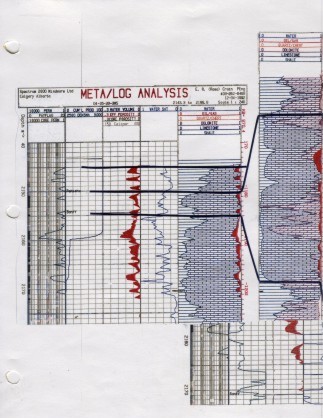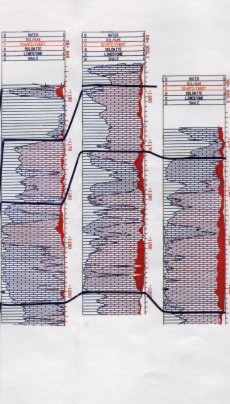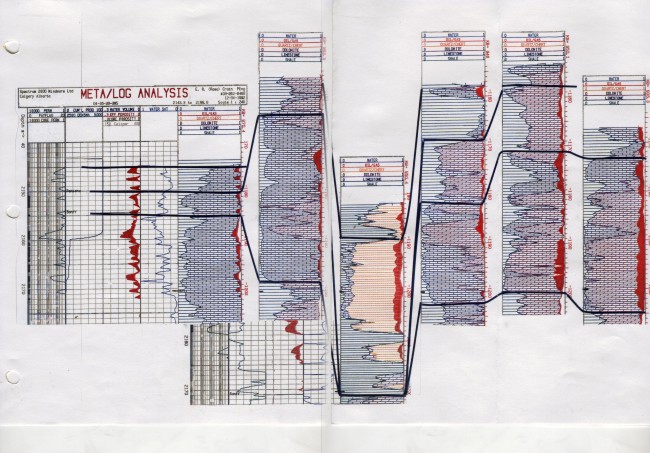|
 SURPRISE, SURPRISE
SURPRISE, SURPRISE
Paleotopography can throw some interesting curves. This
project started 35 years ago as a pool study in support of
unitization, a process where the operators of various wells
use science to come to an agreement as to ownership and cost
sharing so that the oil field can be produced as a single
unit, instead of one well at a time. This is especially
important in anticipation of some form of secondary
recovery, such as a water flood, from which all operators
should benefit. During the initial work, we used the first
desktop computer system for log analysis, developed by the
author.
The pool was duly analyzed,
pressure transient and decline curves were studied by the engineers,
and meetings were held monthly for several years. But no agreement
was reached. The operators in the west had better pressures and
better production than those on the east. No one had a good answer
as to why this should be so. After a while, the meetings fell off
and people stopped talking about forming a unit.
Several years later, the project
was revived by different operators and the petrophysical job
returned. I recognized the project immediately as some of our
original work was in the well files. But more wells had been
drilled, more pressures taken, and of course more oil had been
produced. The objective was still to unitize the field.
But the catching point was the
newest well, drilled based on seismic attributes that suggested a
higher than average porosity near the center of the field. But
it was a sandstone channel incised into the carbonate. The east and
west sides still appeared to be in separate pressure systems and the
channel appeared to be in a third system. So there were three
separate oil fields, not one large field. The channel had to be
isolated from the east and west by shale, not seen on any logs.
The original correlation between
wells also could not predict the channel, and even with the new
seismic, it was predicted as a higher porosity (which it was), but
not as a sandstone channel bisecting the original field. Sample
descriptions and log analysis lithology calculations solved a 10
year old mystery.
My first logging job without
supervision was in a similar environment about 20 miles south of
this one. In those early days, we took the nearest offset well log
from our "private" files to the job site. If the new logs looked
something like the offset, we were home free. My new log was OK
above a certain depth but below there was no similarity. Frantic
radio-phone calls and a visit by the boss fixed it - it was
"geology", not me, that was at fault. You can see why Integrated
Petrophysics is so important. One science at a time will not solve
very many problems.


A west to east cross section showing the original correlation of the
carbonate reservoir.

The west to east cross section 10 years later, with an incised sand
channel separating west from east.
|

